Abstract
More than 1300 compounds have so far been included in the WHO Programme for Evaluating and Testing New Insecticides, which is designed to disclose compounds that may satisfactorily replace those to which insect vectors of disease have become resistant. The authors describe the successful passage of o-isopropoxyphenyl methylcarbamate (OMS-33) through the first 6 stages of the 7-stage programme that has been established for compounds intended for use against anopheline mosquitos and conclude that this product is suitable for testing in the final stage—large-scale epidemiological evaluation.
In operational field trials (at 2 g/m2) OMS-33 has been shown capable of controlling Anopheles stephensi (in Iran), An. gambiae and An. funestus (in Nigeria) for 3-4 months, An. albimanus (in El Salvador) for 2-4 months and An. dthali (in Iran) for 2½ months. It has an airborne effect by which anophelines are killed for a considerable time after OMS-33 has been sprayed, even though they do not make contact with a sprayed surface; this quality would appear advantageous in areas where anophelines enter houses and bite man but do not rest long enough on sprayed surfaces to acquire a lethal dose of insecticide or where significant outdoor biting occurs. The observance of simple safety precautions protects occupants of sprayed houses, spraymen and others from danger. Chemical studies have indicated that commercially produced water-dispersible powders of OMS-33 are stable under field conditions of storage and use.
Full text
PDF
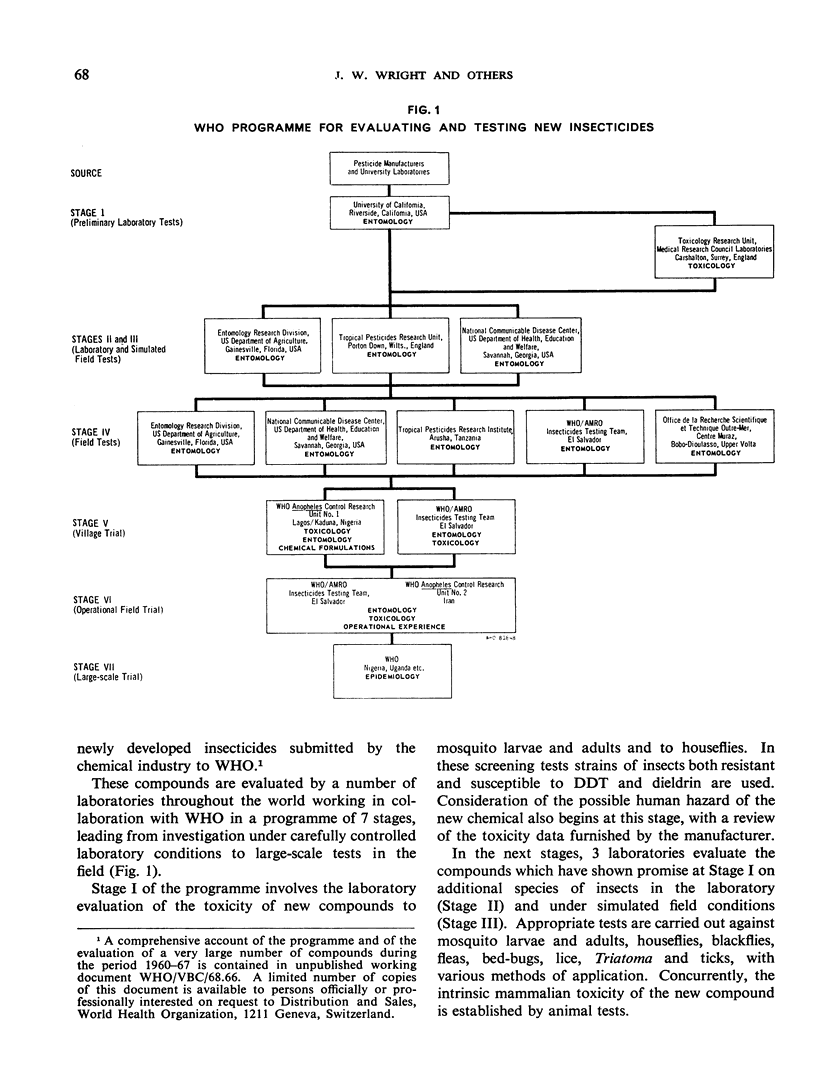
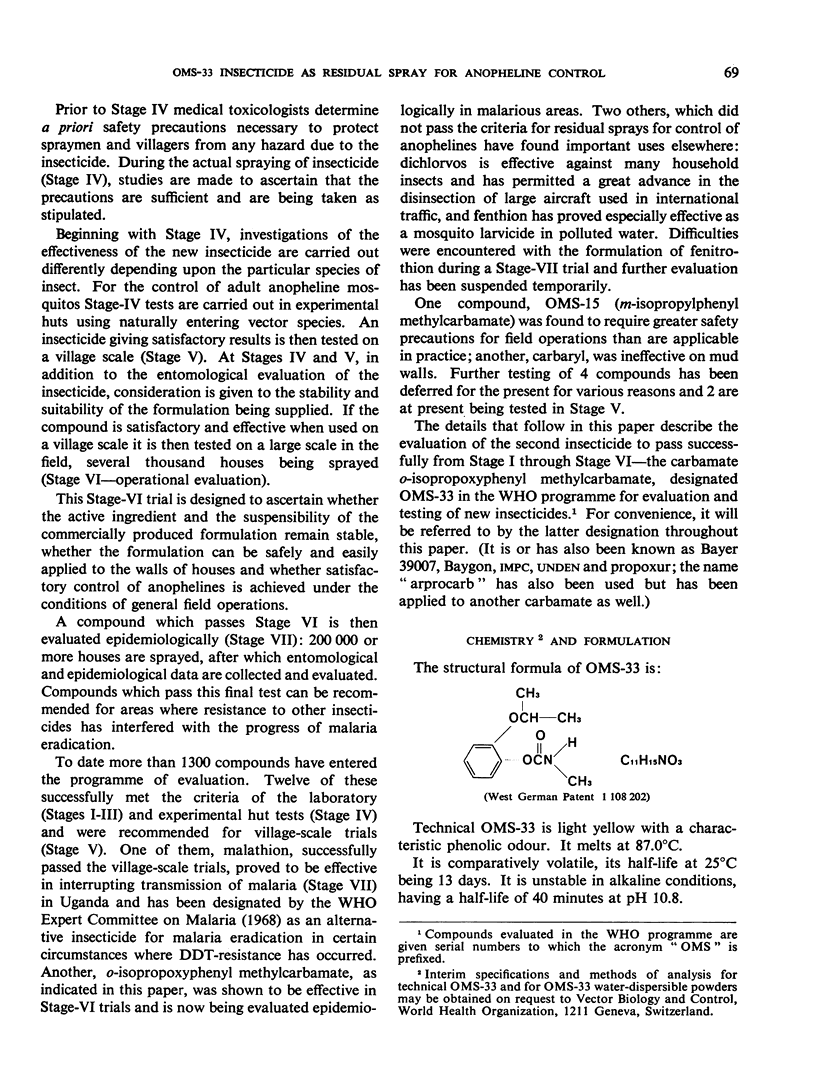
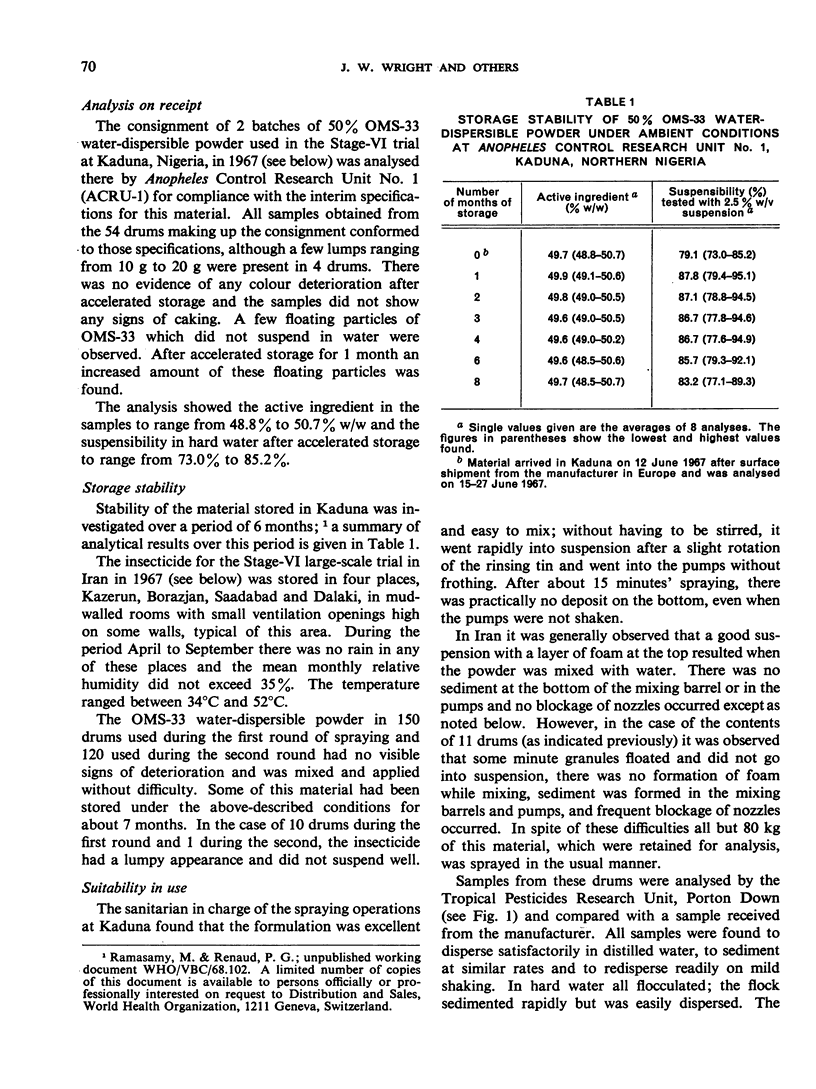
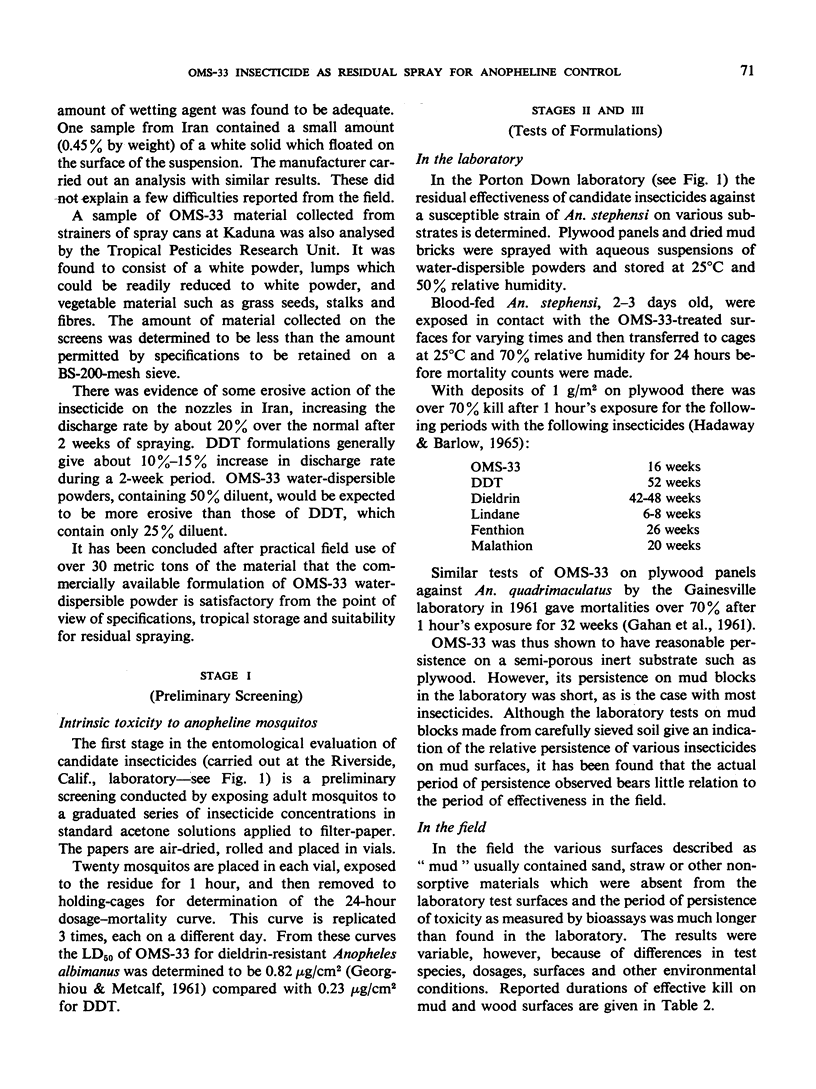
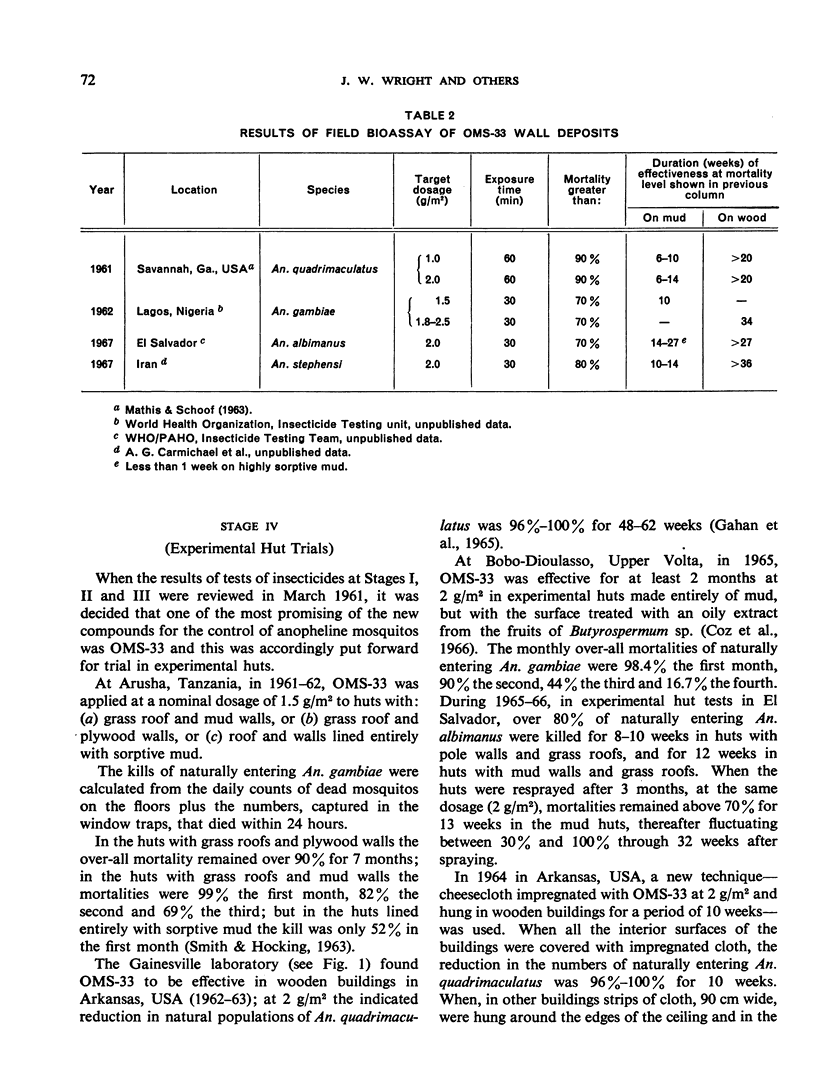
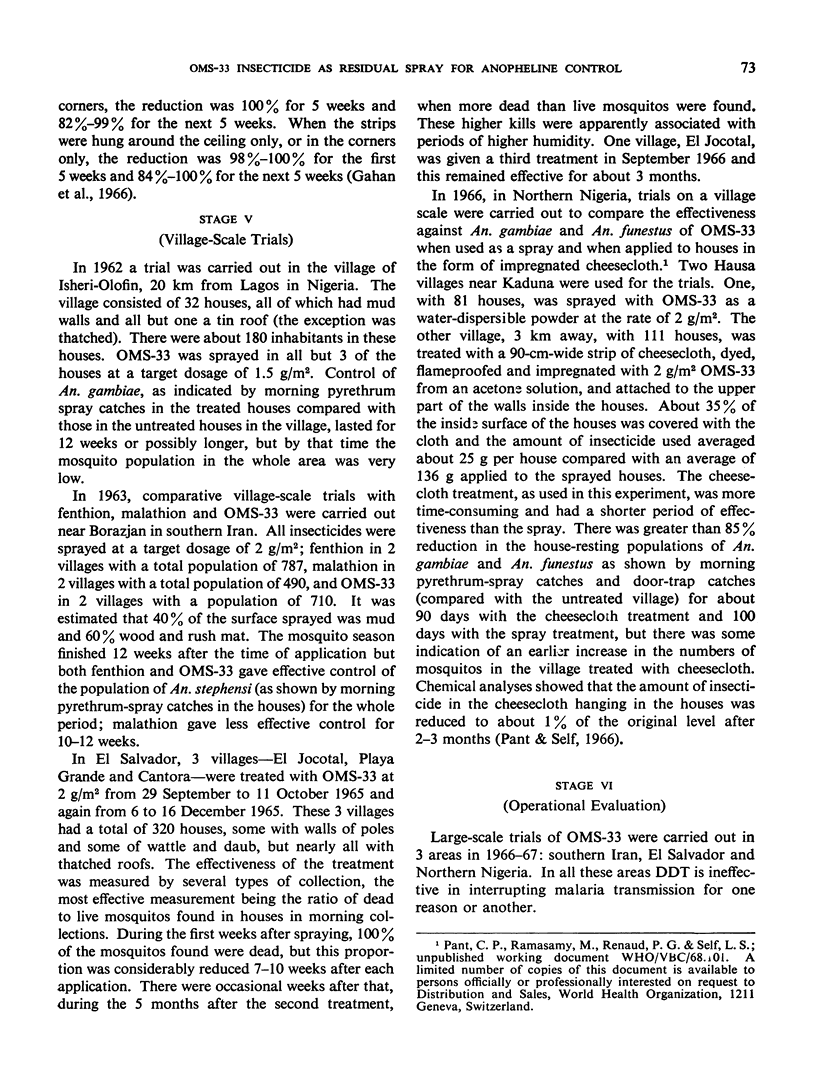
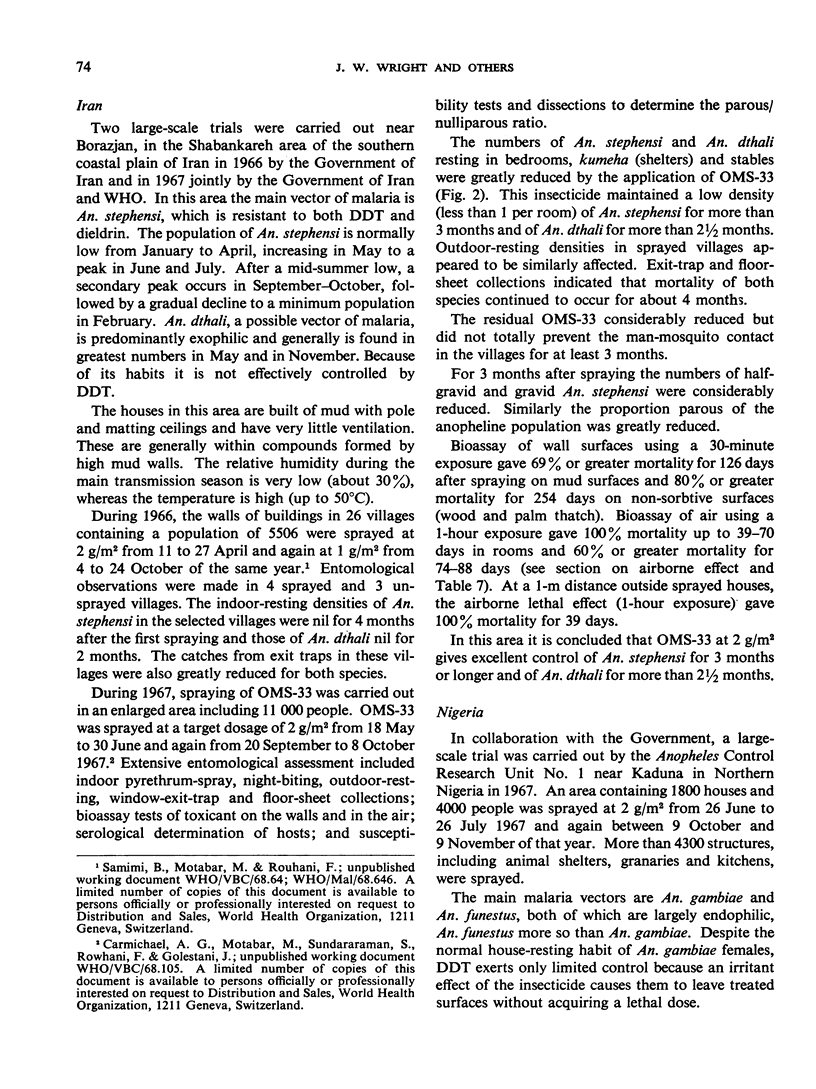
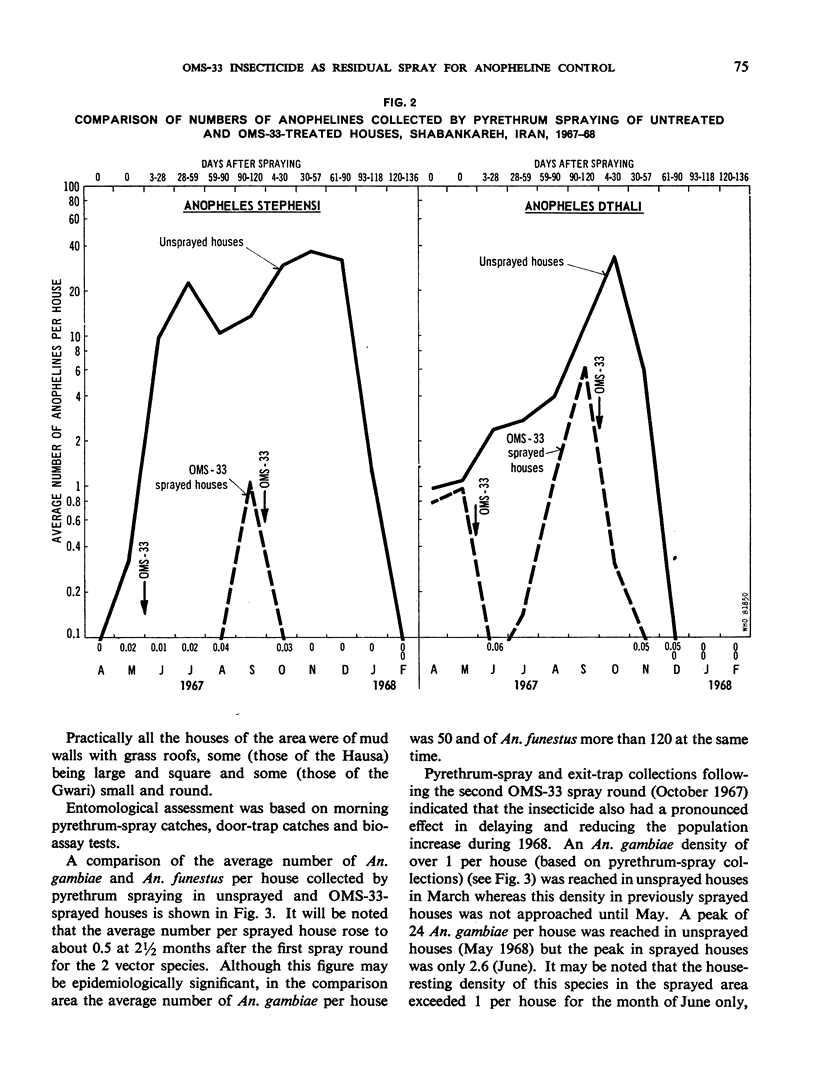

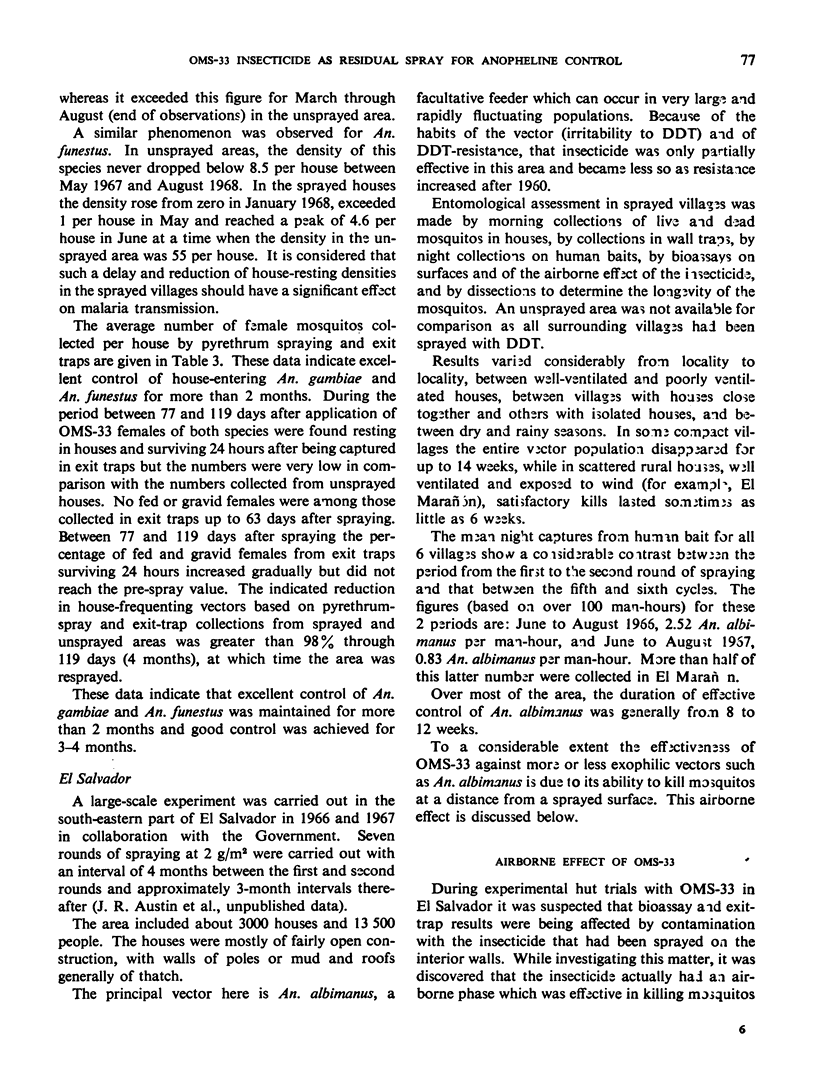
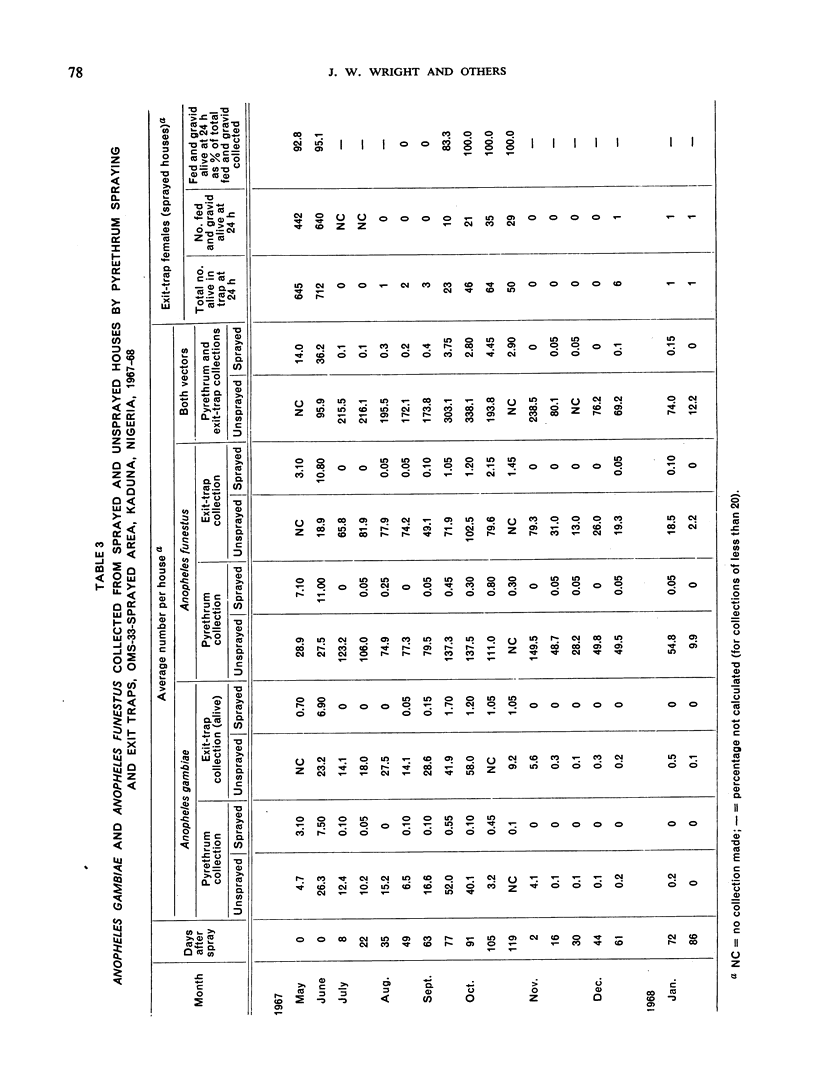
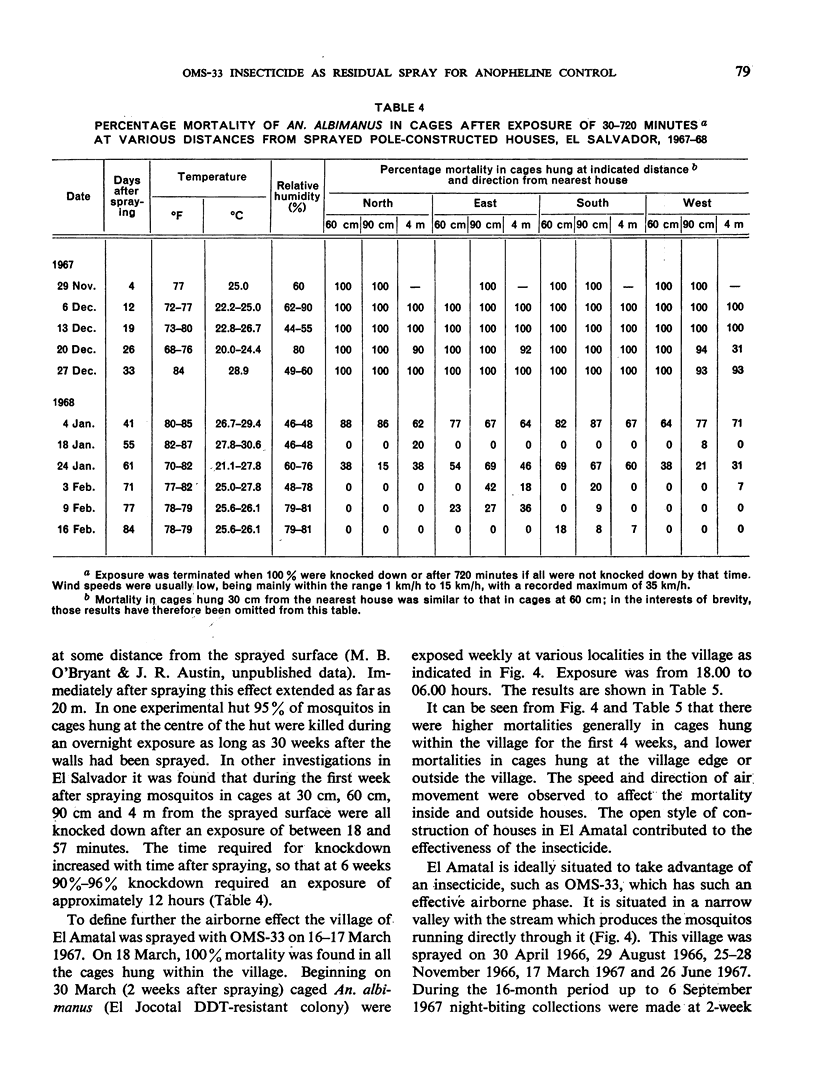

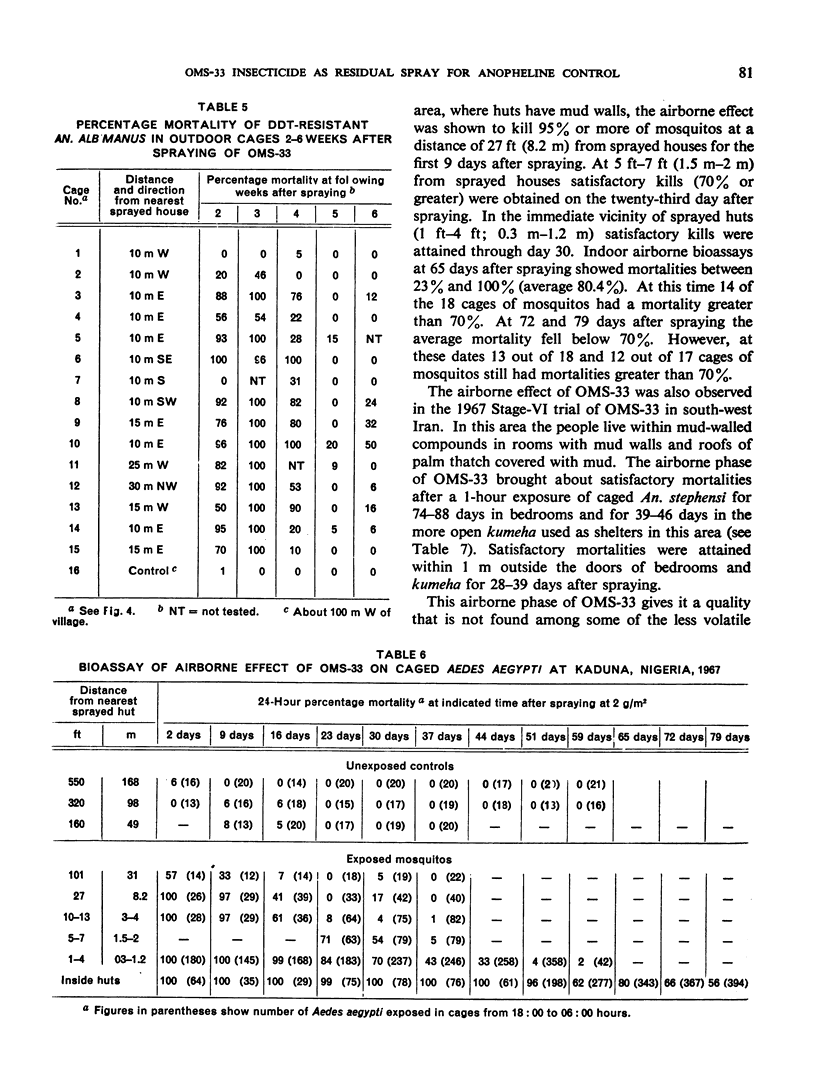
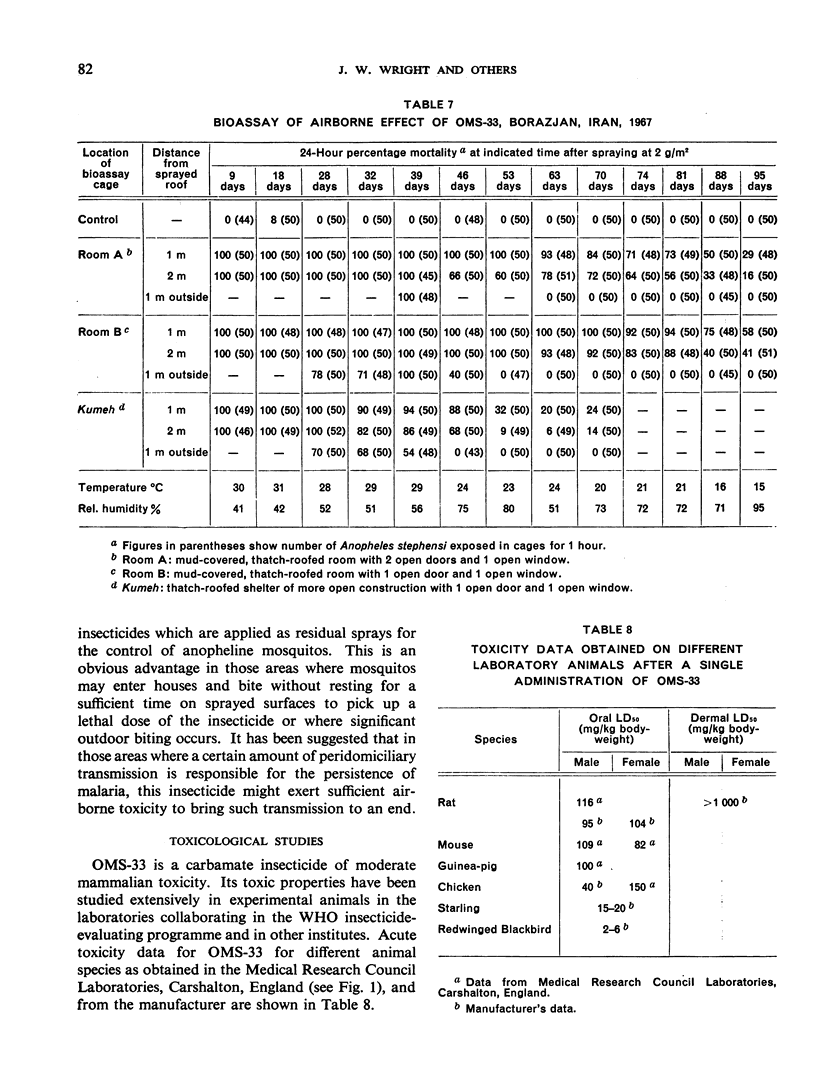
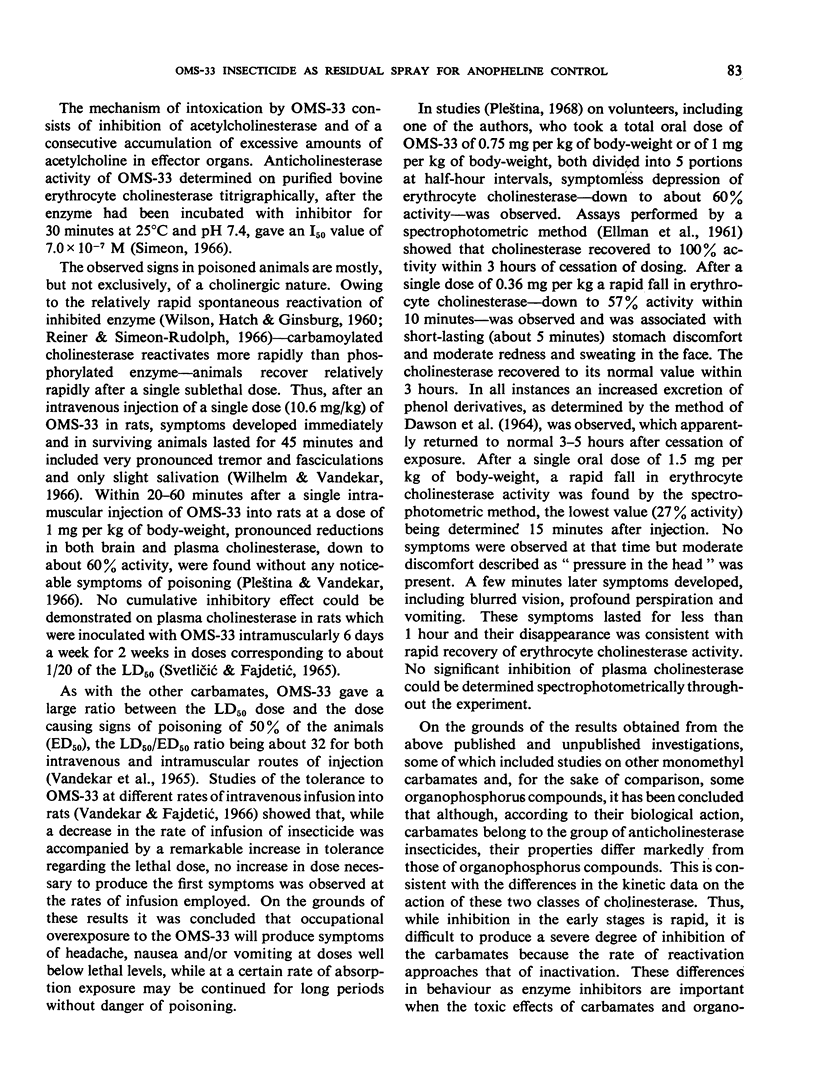
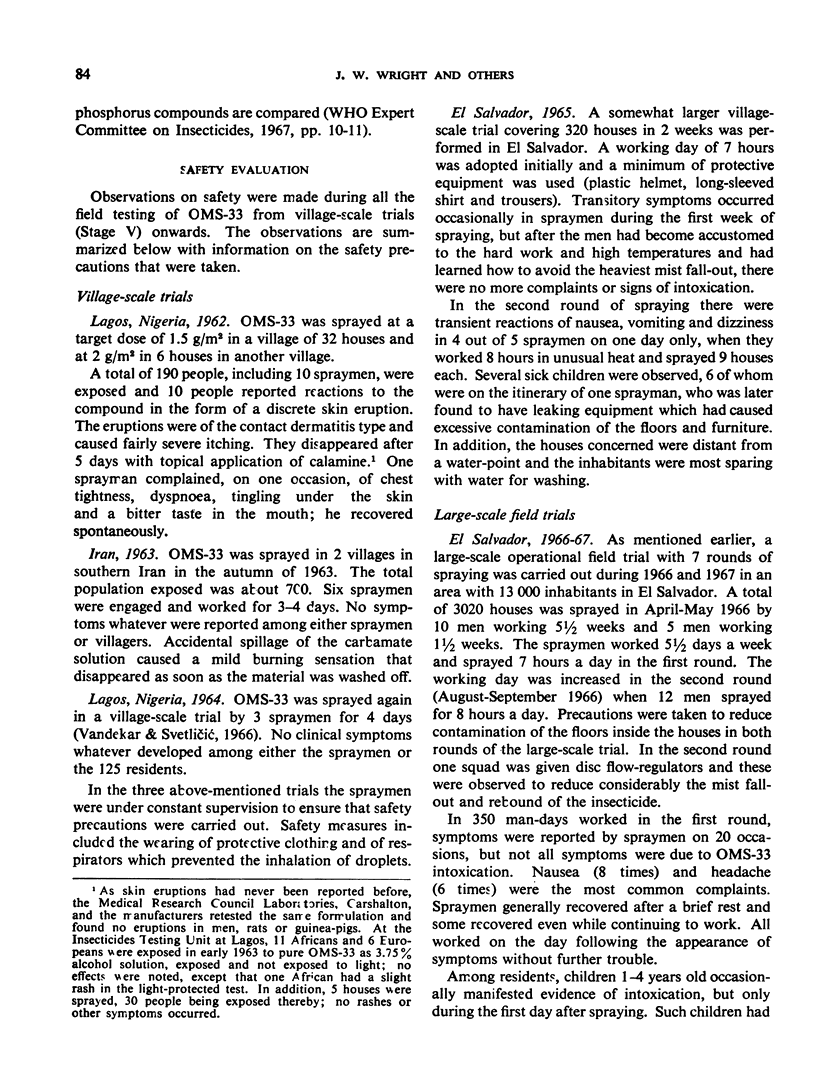
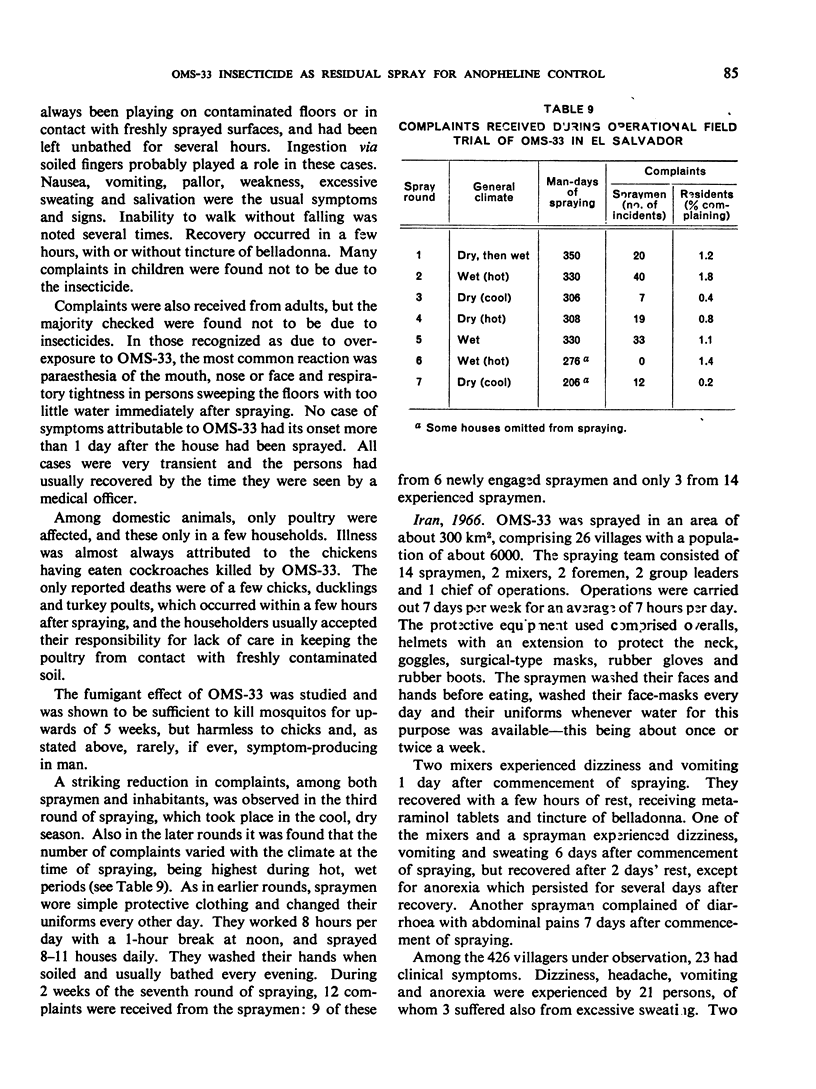
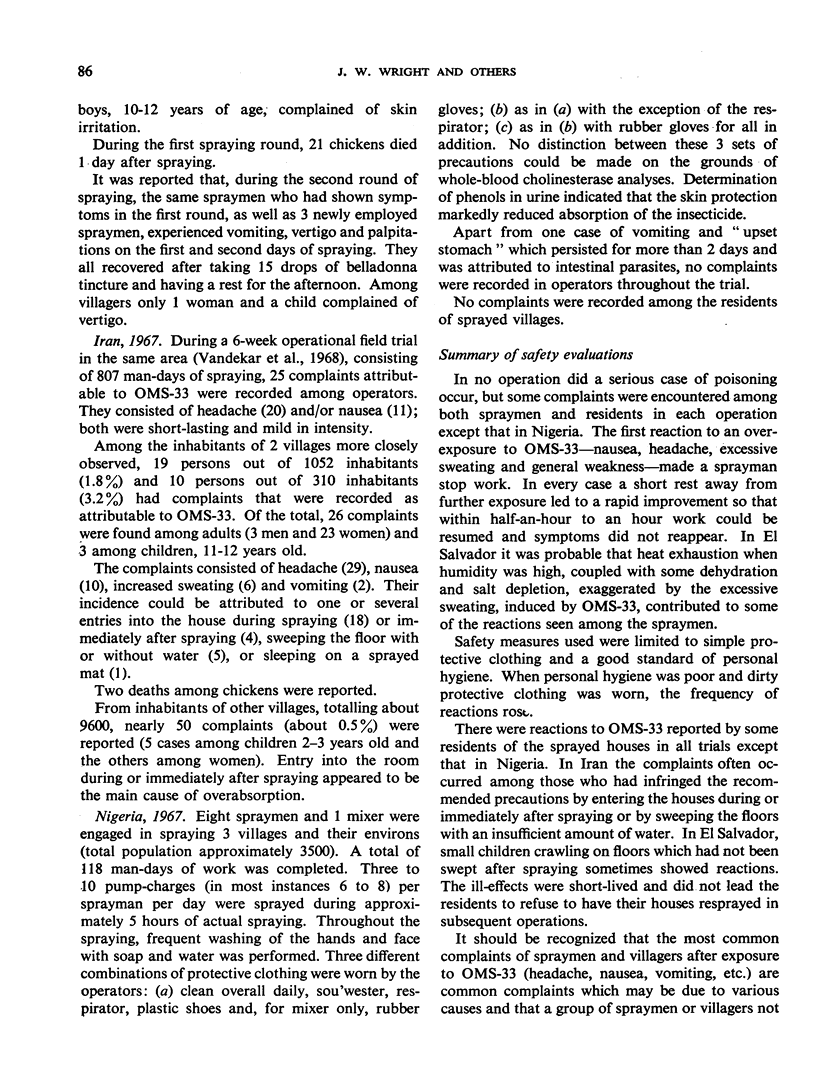
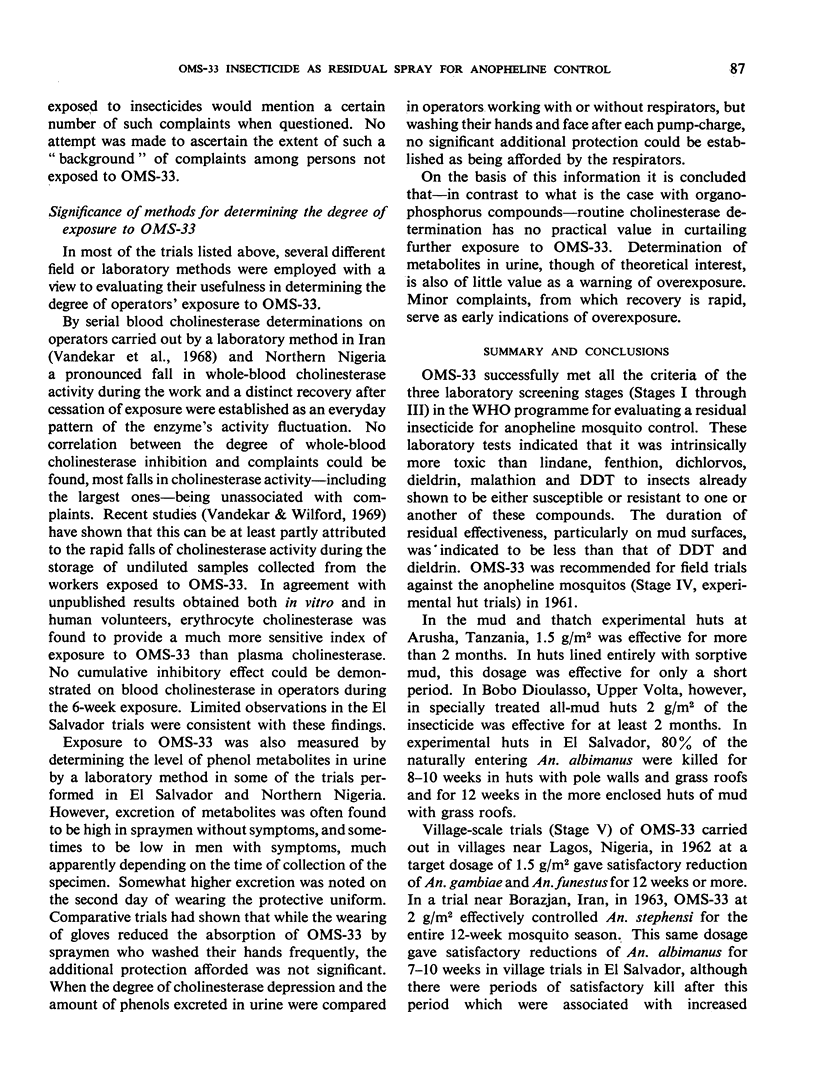
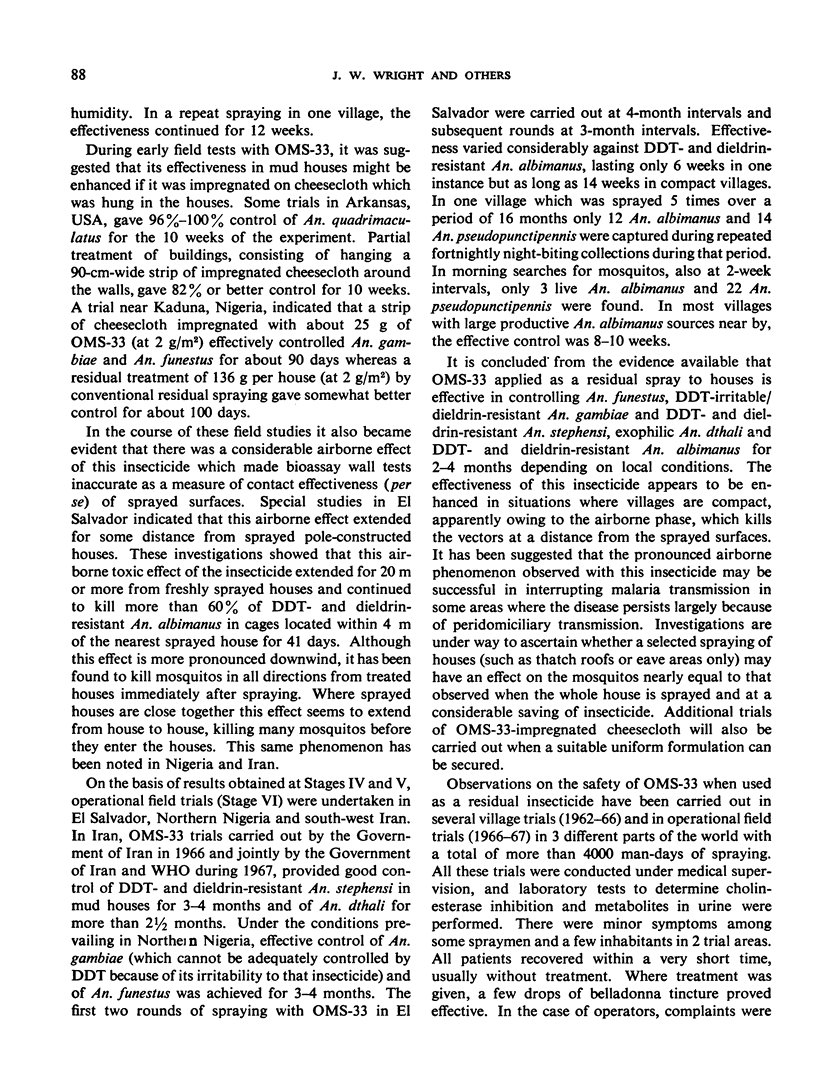
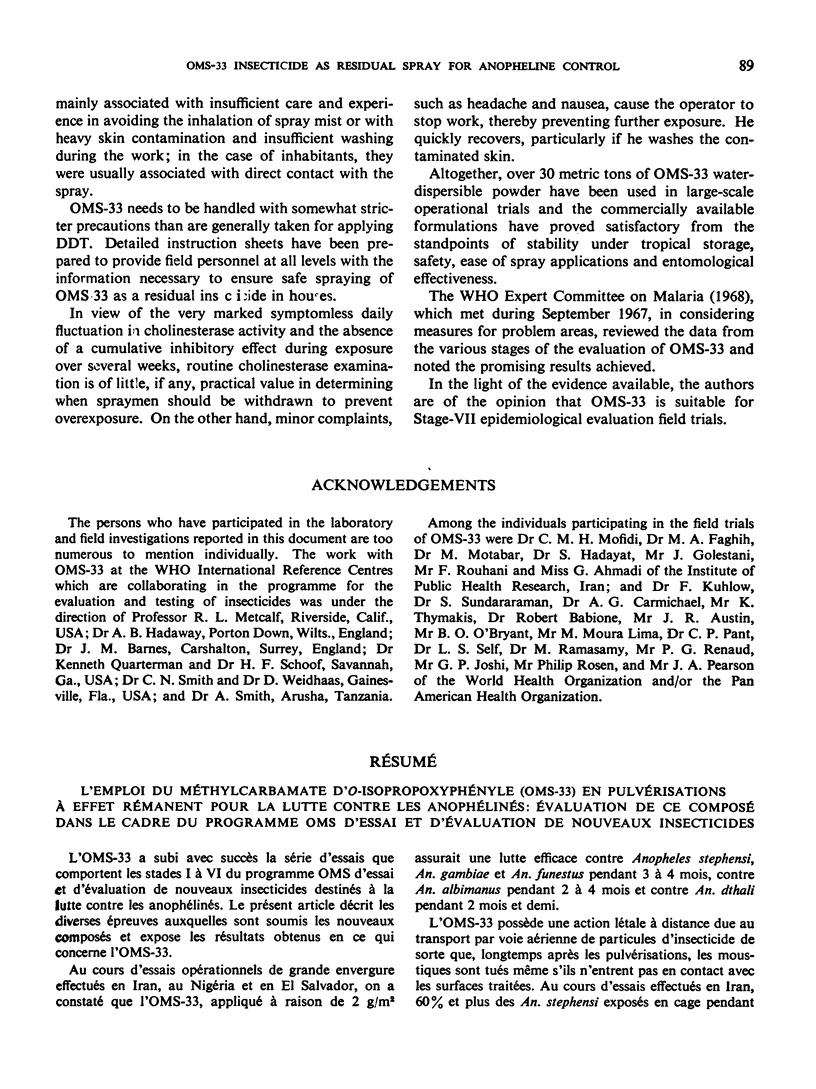
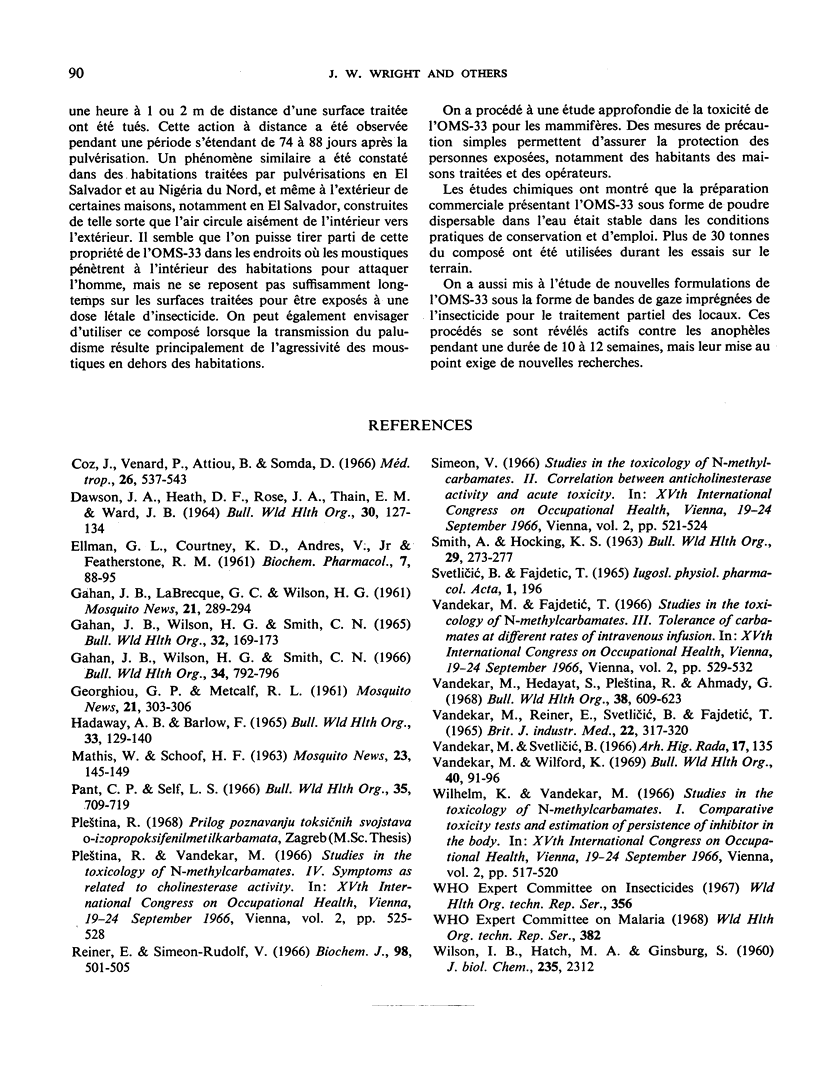
Selected References
These references are in PubMed. This may not be the complete list of references from this article.
- Coz J., Attiou B., Venard P., Somda D. Etude de la rémanence des produits insecticides OMS 33, OMS 716, OMS 597. Med Trop (Mars) 1966 Sep-Oct;26(5):537–543. [PubMed] [Google Scholar]
- DAWSON J. A., HEATH D. F., ROSE J. A., THAIN E. M., WARD J. B. THE EXCRETION BY HUMANS OF THE PHENOL DERIVED IN VIVO FROM 2-ISOPROPOXYPHENYL N-METHYLCARBAMATE. Bull World Health Organ. 1964;30:127–134. [PMC free article] [PubMed] [Google Scholar]
- ELLMAN G. L., COURTNEY K. D., ANDRES V., Jr, FEATHER-STONE R. M. A new and rapid colorimetric determination of acetylcholinesterase activity. Biochem Pharmacol. 1961 Jul;7:88–95. doi: 10.1016/0006-2952(61)90145-9. [DOI] [PubMed] [Google Scholar]
- GAHAN J. B., WILSON H. G., SMITH C. N. ADDITIONAL STUDIES WITH NEW INSECTICIDES AS RESIDUAL SPRAYS IN BUILDINGS NATURALLY INFESTED WITH ANOPHELES QUADRIMACULTATUS. Bull World Health Organ. 1965;32:169–173. [PMC free article] [PubMed] [Google Scholar]
- Gahan J. B., Wilson H. G., Smith C. N. Cheesecloth impregnated with baygon for control of Anopheles quadrimaculatus Say. Bull World Health Organ. 1966;34(5):792–796. [PMC free article] [PubMed] [Google Scholar]
- Hadaway A. B., Barlow F. Evaluation of the toxicity to adult Anopheles stephensi List, and the residual action of various chlorinated hydrocarbons, organophosphorus compounds and carbamates. Bull World Health Organ. 1965;33(1):129–140. [PMC free article] [PubMed] [Google Scholar]
- Pant C. P., Self L. S. Field trials of Bromophos and Schering 34615 residual sprays and of cheesecloth impregnated with Bayer 39007 for control of Anopheles gambiae and A. funestus in Nigeria. Bull World Health Organ. 1966;35(5):709–719. [PMC free article] [PubMed] [Google Scholar]
- Reiner E., Simeon-Rudolf V. The kinetics of inhibition of erythrocyte cholinesterase by monomethylcarbamates. Biochem J. 1966 Feb;98(2):501–505. doi: 10.1042/bj0980501. [DOI] [PMC free article] [PubMed] [Google Scholar]
- SMITH A., HOCKING K. S. ASSESSMENT OF THE RESIDUAL TOXICITY TO ANOPHELES GAMBIAE OF THE INSECTICIDES UC-10584 AND BAYER 39007. Bull World Health Organ. 1963;29:273–277. [PMC free article] [PubMed] [Google Scholar]
- Vandekar M., Hedayat S., Plestina R., Ahmady G. A study of the safety of O-isopropoxyphenylmethylcarbamate in an operational field-trial in Iran. Bull World Health Organ. 1968;38(4):609–623. [PMC free article] [PubMed] [Google Scholar]
- Vandekar M., Reiner E., Svetlicić B., Fajdetić T. Value of ED50 testing in assessing hazards of acute poisoning by carbamates and organophosphates. Br J Ind Med. 1965 Oct;22(4):317–320. doi: 10.1136/oem.22.4.317. [DOI] [PMC free article] [PubMed] [Google Scholar]
- Vandekar M., Svetlicić B. Observations on the toxicity of three anticholinesterase insecticides in a village-scale trial and comparison of methods used for determining cholinesterase activity. Arh Hig Rada Toksikol. 1966;17(2):135–150. [PubMed] [Google Scholar]
- Vandekar M., Wilford K. The effect on cholinesterase activity of storage of undiluted whole blood sampled from men exposed to o-isopropoxyphenyl methylcarbamate (OMS-33). Bull World Health Organ. 1969;40(1):91–96. [PMC free article] [PubMed] [Google Scholar]
- WILSON I. B., HATCH M. A., GINSBURG S. Carbamylation of acetvlcholinesterase. J Biol Chem. 1960 Aug;235:2312–2315. [PubMed] [Google Scholar]


